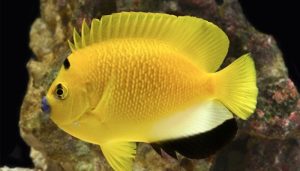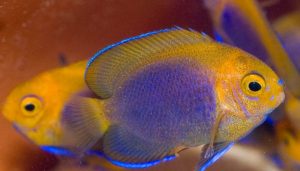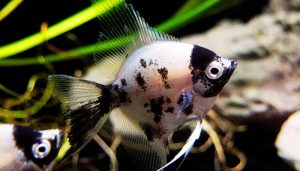Are you considering setting up a betta fish tank but feeling overwhelmed by all the information? Don’t worry; you’re not alone. Many first-time betta fish owners struggle with the same questions: What size tank do I need? What equipment do I need to buy? How do I create a healthy betta environment?
This blog post explains the ten essential steps for setting up betta fish tank like a pro.
Whether you’re a seasoned fish keeper or a first-time betta owner, this step-by-step guide will walk you through everything you should know to confidently set up your betta tank.
We’ll cover everything from choosing the right tank size to selecting the right tankmates.
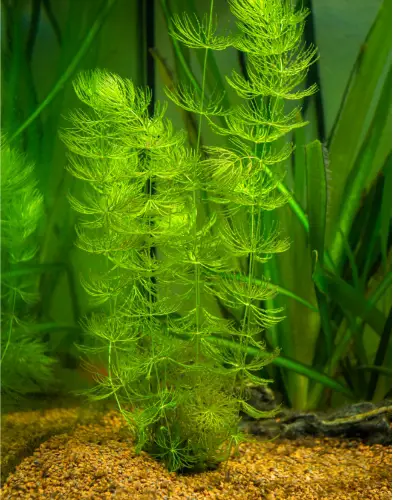
You’ll learn how to set up betta tank and accessories, introduce your betta to its new home, and keep the tank clean and healthy.
By the end of this ultimate guide, you’ll have all the details you’ll need to set up a betta fish tank that your fish will love. So, let’s dive in and get started!
Table of Contents
ToggleWhat Size Betta Tank Do You Need?
The minimum tank size for one betta fish is 5 gallons, but a 10-gallon tank is ideal for a single betta fish or a community fish tank with other peaceful fish species.
Betta fish are active swimmers and need a tank with plenty of rooming space to swim around, so a smaller tank is not recommended.
A larger tank also means the tank water quality is more stable and easier to maintain, which is crucial for your betta’s health.
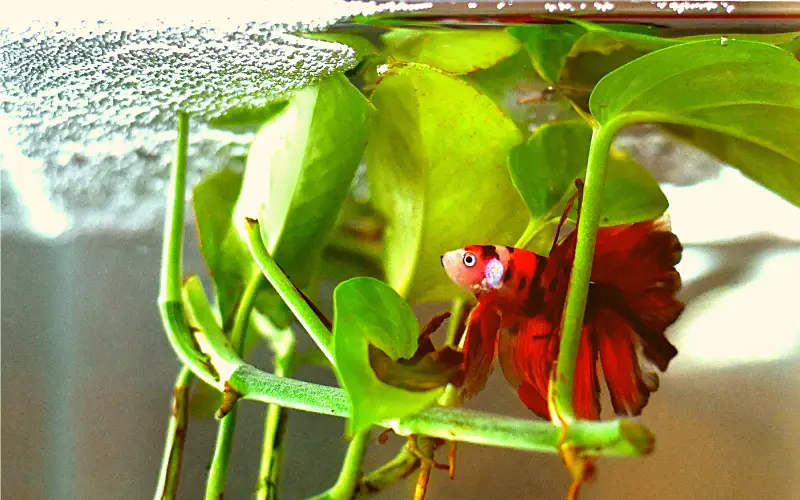
Additionally, a larger tank filled with water allows for more flexibility in choosing tankmates, as betta fish can be aggressive toward other fish if they feel their territory is threatened. Overall, a larger tank is always a better choice for your betta fish regarding their physical and mental well-being.
What About Tank Mates?
Betta fish are known for hostility towards other fish, especially male betta fish. However, they can be kept in a community tank with other peaceful fish species if the tank is large enough and there are enough hiding places for each fish to have their territory.
When choosing types of fish for your betta fish, it’s important to consider their temperament and compatibility. Some suitable betta fish companions include peaceful species like neon tetras, Corydoras catfish, and guppies.
It’s best to avoid fish known to nip at fins, such as barbs and some tetra species, as they can provoke aggression in betta fish. It’s also important to monitor the behavior of all fish in the tank and be prepared to separate any fish showing aggression towards each other.
Choosing the right mates for your betta fish can be a frolic and pleasing experience, but it needs careful consideration and planning to ensure that all fish in the tank are happy and healthy.
Why Is a Proper Betta Fish Tank Setup Necessary?
A proper betta fish aquarium setup is necessary for several reasons.
- First, it ensures that the water quality in the tank is healthy for your fish, which is crucial for their health and well-being. Poor water tanks can lead to illness and disease, which can be fatal for your fish.
- Second, a proper setup with a heater and thermometer ensures the water temperature remains stable and within the optimal range for your fish. Bettas are tropical fish and need a consistent water temperature between 76 to 80 degrees Fahrenheit.
- Third, a proper setup with a tank of at least 5 gallons provides enough space for your fish to move around comfortably. Bettas are active swimmers and need plenty of space for your betta fish to swim around.
- Fourth, a proper setup with a filter and live plants ensures enough oxygen in the water for your fish to breathe.
- Finally, a proper setup with decorations like rocks, driftwood, and aquarium plants provides hiding places for your fish to create their own territory and reduce stress.
A proper betta tank setup is necessary to ensure your fish live a healthy and happy life and prevent illness, stress, and a shortened lifespan.
How to Set up a Betta Tank? (10 Essential Tips)
Setting up a betta fish tank can be a fun and rewarding experience. Still, it requires careful planning and attention to detail to ensure your fish have a healthy and comfortable environment. These steps will help you confidently set up the bettas tank and ensure your fish thrive in their new home.
Step 1: Find out how to set up a betta tank
You must know what you’re doing before you start the tank setup process. Research is key to setting up your tank properly. You need to know the minimum tank size for your betta, what tank mates are suitable for your betta, and what type of environment your betta fish need.
Step 2: Choose the perfect tank for your betta
The size of your tank is crucial when it comes to setting up a betta tank. Betta needs plenty of space to swim around, so a smaller tank is not recommended. A 5-gallon tank is the minimum viable size for a single betta fish, while a 10-gallon tank is ideal for a community tank.
Step 3: Set up your tank and accessories
Once you got your tank, it’s time to set it up. Fill your tank with tap water and add your aquarium heater. This will keep the tank water at a consistent temperature, which is essential for your betta fish’s health. Add live and fake plants to provide your fish with cover and a resting place.
Step 4: Introduce your betta to the tank
Now that your Betta tank is filled with water, it’s time to introduce your betta fish. Acclimatize your betta fish to the new environment by floating the bag in your tank for a few hours. Then, release your betta fish into the tank.
Step 5: Keep your betta tank clean
It’s essential to keep your tank clean. Use a fish tank vacuum to clean out the fish waste from the bottom of the tank. Clean the tank once a week to ensure that your betta’s environment stays healthy.
Step 6: Cycle your tank
Cycling your tank is essential in setting up a betta fish tank. This process helps to establish a healthy bacterial colony in your tank, which is crucial for maintaining good water quality. It could take weeks to nitrogen cycle your tank, so be patient.
Step 7: Choose tank mates carefully
Betta fish are territorial and aggressive towards other fish, so choosing the right tank mates is essential. Siamese fighting fish, or betta fish, can be kept in a community fish tank with other peaceful fish species, such as neon tetras and guppies.
Step 8: Feed your fish appropriately
Feed your betta fish a balanced diet of high-quality fish food, such as pellets and frozen or live food. Overfeeding can lead to health issues, so feed your beautiful fish in small amounts twice a day.
Step 9: Keep your betta fish healthy
Regularly monitor your betta fish for signs of illness, such as lethargy, loss of appetite, and abnormal betta behavior. Maintain a healthy tank for your fish by keeping the water temperature consistent and the tank clean and feeding your fish a balanced diet.
Step 10: Create the perfect betta fish tank setup
With the right equipment and some knowledge, you can create the perfect betta fish tank setup. Give your betta fish plenty of space to swim, provide them with cover and a place to rest, and keep their environment healthy and clean.
What Equipment Should the Ideal Betta Tank Have?
The ideal betta fish tank should have certain equipment to create a comfortable environment for your fish. Here are the essential pieces of equipment you’ll need for a betta tank:
1. Tank – The tank size should be at least 5 gallons, but a 10-gallon tank is ideal.
2. Filter – A Tank filter is key to keep the water tank clean for your beloved fish. A sponge tank filter or a hang-on-back filter is a perfect choice for a betta tank.
3. Heater – Betta fish need a temperature of 76-82°F, so a heater is essential to maintain a consistent temperature.
4. Thermometer – A thermometer is necessary to monitor the water temperature in the tank.
5. Lighting – Lighting is not essential for betta fish, but it can enhance the beauty of the tank and promote plant growth.
6. Substrate – Gravel or sand is necessary to provide a water surface for beneficial bacteria to grow and to anchor live plants.
7. Decorations – Rocks, driftwood, and plants provide hiding places for your fish and create a natural environment.
8. Water conditioner – A water conditioner is necessary to remove chlorine and other toxic chemicals from tap water.
This essential equipment from any nearby pet store can create a healthy surrounding environment for your betta fish to thrive in.
Some Optional Equipment for Your Betta Tank
In addition to the crucial equipment, there is other betta equipment that can enhance the beauty and functionality of your betta tank. Here are a few fish examples that you can find in any fish store:
- Air pump – An air pump can increase oxygen levels in the tank and create bubbles for aesthetic purposes.
- Live plants – Live plants not only add to the beauty of the tank but also provide hiding places for your fish and help maintain water quality.
- Background – A background can be added to the back of the tank to create a more natural and visually appealing environment.
- Gravel vacuum – A gravel vacuum can remove debris and waste from the substrate during water changes.
- Net – A net is useful for catching and moving fish, especially during tank maintenance.
While these pieces of equipment are not necessary, they can add to your betta tank’s overall health and beauty. It’s important to research and discover the needs of your betta and the equipment you choose to use to create a healthy and comfortable environment for them.
The Ideal Betta Fish Environment
The ideal betta fish environment mimics their natural habitat in the wild. Bettas are native to Southeast Asia, living in shallow waters with plenty of plants and hiding places. Here are some points to put in mind when creating an ideal betta fish environment:
1. Tank size – The ideal tank size for a betta is at least 5 gallons, but 10 gallons or larger is recommended for a more comfortable and healthy environment.
2. Water temperature – Siamese fighting fish prefer a temperature between 76-82°F.
3. Water quality – Maintaining good water quality by cycling the tank, performing regular water changes, and using a water conditioner to remove harmful chemicals from tap water is important.
4. Filtration – An aquarium filter is substantial to keep the tank water clean and healthy for your pet fish.
5. Substrate – Gravel or sand provides a surface for beneficial bacteria to grow and anchor live plants.
6. Plants and decorations – Live plants, rocks, and driftwood provide hiding places for your fish and create a natural environment.
7. Tank mates – If keeping multiple fish in the same tank, choosing compatible species is important as ensuring that each fish has enough space and hiding places.
Creating an ideal betta fish environment takes time, effort, and research. By mimicking their natural habitat and providing a comfortable and healthy environment, you can ensure that your betta fish thrive and live a happy and healthy life.
Can Betta Fish Live in Bowls?
Betta fish can technically live in bowls, but it is not advised as it’s not a suitable environment for their health and well-being. Betta fish are active swimmers and need enough space to swim around, so a small bowl does not provide enough room to move around comfortably.
Bowls typically do not have a filtration system, which can lead to poor water conditions and a buildup of harmful toxins. Without proper filtration and regular water changes, betta fish in bowls are more prone to illness and disease.
In addition to space and water quality concerns, bowls lack the necessary equipment to create a healthy and comfortable environment for betta fish, such as heaters, thermometers, and filters. In the long term, keeping a betta fish in a small bowl can lead to stunted growth, stress, and a shortened lifespan.
In summary, while betta fish can technically live in bowls, it is not recommended as it is not a suitable environment for their health and well-being. It’s best to provide them with a tank of at least 5 gallons with proper filtration, heating, and regular water changes to ensure they live a happy life.
Betta Fish Tank Ideas:
There are many different betta fish-keeping ideas that you can consider to create a beautiful and natural environment for your fish. Here are a few pro ideas to get you started setting up the tank:
1. Natural planted tank – Create a natural environment with live plants such as Anubias, Java fern, or Amazon sword plants. This will create a beautiful underwater landscape while providing hiding places and oxygen for your betta fish.
2. Biotope tank – Create a biotope tank that mimics the natural habitat of betta fish in the wild. This could include a setup with sand substrate, driftwood, and rocks to create a natural riverbed or stream environment.
3. Desktop tank – A small desktop tank can considerably add to your workspace or home decor. You can use a small tank with decorations like rocks, plants, and a small piece of driftwood to create a mini underwater oasis.
4. Community tank – Bettas can be kept in a community aquarium with other peaceful fish species, such as neon tetras, corydoras, catfish, or guppies. A community tank can provide a more dynamic and interesting environment for your fish.
5. Themed tank – Create a themed tank with decorations that match your style or interests. For example, you could create an underwater castle or a pirate-themed tank with decorations like treasure chests and pirate ships.
These are just a few excellent ideas to get you started. The possibilities are endless for creating a beautiful and natural habitat for your betta fish. Just remember to find out the specific needs of your fish and choose decorations and plants that are compatible with their environment.
Note: Certain decorations may possess sharp edges or protruding features that could potentially tear the fins or cause injury to a betta fish by getting snagged on them.
Commonly Asked Questions about Setting up Betta Tank (FAQs)
What Tank Size is Ideal for Betta Fish?
The ideal container size for betta fish is at least 5 gallons, but a 10-gallon tank or larger is even better. Bettas are active swimmers and need plenty of space to move around comfortably, and a larger tank provides a more stable environment with easier temperature and water parameter control.
Can Betta Fish Thrive in a Bowl Without a Filter?
While betta fish can technically live in a bowl without a filter, it is not recommended. Bowls do not provide enough space or a proper environment for betta fish. Without a filter, the water quality can quickly deteriorate, leading to poor health and disease in the fish.
How to Introduce Your Betta to its New Tank?
To introduce a new betta fish to the tank, acclimate them to the water temperature, then carefully release your fish into the tank. It’s best to dim the lights and avoid disturbing the fish for a few hours to familiarize them with their new environment.
Do I Need a tank filter for my betta fish?
Yes, a filter is essential for a betta fish tank. Filters help keep the water tank clean and healthy by removing waste and harmful toxins. Without a filter, the water quality in the tank can deteriorate quickly, leading to poor health and disease in your fish.
Do Betta Fish Need a Heater?
Yes, betta fish need a heater to maintain a consistent water temperature between 76-82°F, essential for their health and well-being. Without a tank heater, the water temperature can fluctuate and cause stress and illness in your fish.
Does Betta Fish Like Light? Do They Need it at Night?
Betta fish do not require light at Night and prefer periods of darkness to rest. While they like light during the day, it’s important to provide them with a proper light cycle and avoid keeping the tank in direct sunlight.
How Long You Should Wait to Put Betta Fish in a New Tank?
After completing a fishless cycle, you should wait a few days to allow the water parameters to stabilize before adding your betta fish to the new tank. This will ensure the water conditions are suitable and safe for your fish.
Final Thoughts
In conclusion, setting up your first betta fish tank doesn’t have to be a difficult or overwhelming task. By following the ten essential steps for setting up betta fish tank like a pro, you can provide a comfortable and healthy environment to thrive. Remember to research before you start, choose the right tank size, Set up a betta fish tank and accessories properly, fill the tank, and introduce your betta to their new home slowly. Cycling your tank, choosing tank mates carefully, feeding your fish appropriately, and monitoring their health regularly are all crucial steps in keeping your betta fish happy and healthy.
By implementing these easy-follow steps, you can create a natural environment that your beautiful betta fish will love. So, whether you’re new to fish keeping or an experienced pro, these steps will help you find the detailed information you need to create the perfect environment for your betta. Thanks for reading our 10 Essential Steps for Setting Up a Betta Fish Tank Like Pro article!
You might also like
- Betta Fish Not Eating and Laying at Top: (5 Reasons & Cure)
- Why Does My Betta Fish Stay at the Bottom of the Tank: (FAQ)
- Why Do Betta Fish Disappear from Tank? (5 Shocking Reasons)
- How Many Betta Fish in10 Gallons Tank? (Beginner’s Guide)
- Can Betta Fish Live with Guppies (7 Safest Betta Tank Mates)
- Can Female Betta Fish Live Together (A Comprehensive Guide)
- Can 2 Female Betta Fish Live Together: Discover the Truth


